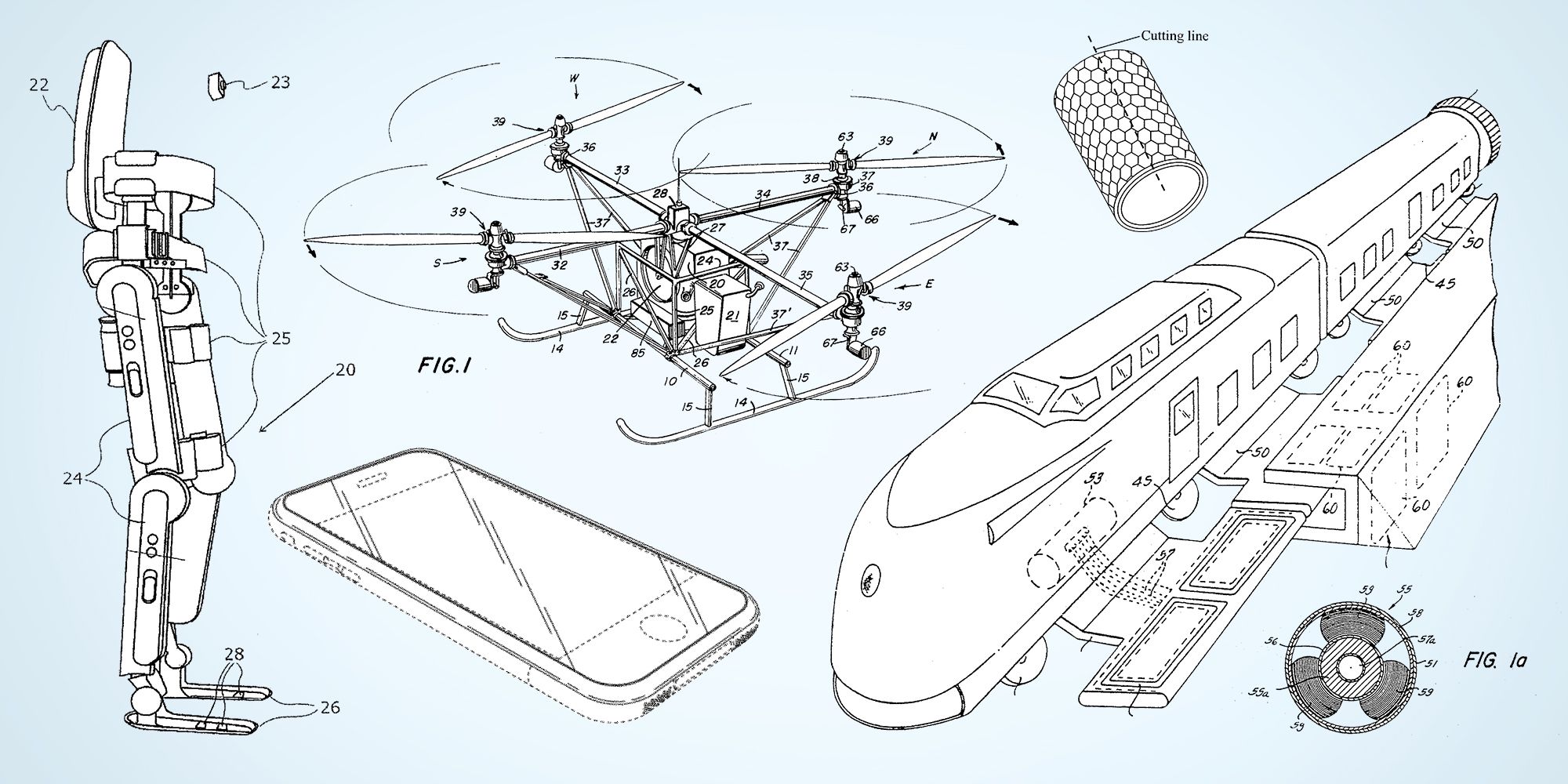Top 10 Highly Valuable Patents Disclosed to the Public
10. Volvo Forfeited Ownership of the 3-Point Safety Belt Patent
These days, most people would find it difficult to picture a vehicle without seatbelts. However, they weren’t always standard in vehicles, and their usage was optional even after their introduction. Those who strongly opposed the idea of obligatory seat belt use in the 1980s actually responded with furious protests.
Volvo patented the three-point safety belt—the one that most of us know and love—in 1959. It passes over your shoulder and snaps into place at your side. Seat belts had already been present for decades before legislation made them mandatory.
The man responsible for the belt and patent was engineer Nils Bohlin. You can only guess the value of holding the patent since 1959, given that his technology is in every current car on the planet. Annual production exceeds 92 million vehicles.
But Bohlin was not the type to seek financial gain from a potentially life-saving innovation. Only Volva possessed this technique in 1959. Other automakers made full use of the technologies that Bohlin and Volvo generously made available to the industry. Because of this game-changing technology, countless lives have been spared.
9. 24,000 Royalty-Free Patents for Tech Related to Electric Cars Were Announced by Toyota
Even though car corporations are some of the wealthiest in the world, there are rare occasions when they do good, like in the Volvo example up there. However, they aren’t alone.
In the present day, there is an effort to maintain an eye on electric vehicles and other forms of alternative energy transportation. No matter how much we try to avoid it, we will eventually have to learn to live without gasoline because of the pollution it causes and the fact that it is not an endless resource.
Toyota has made available to the public an astounding 24,000 electric car-related patents that are royalty-free, with the aim of improving electric automobiles and associated technologies. Although this occurred in 2019, Elon Musk and Tesla had already done this five years prior, sharing their patents with the world in order to maintain the drive for electric cars.
Of course, there’s more to this story than meets the eye; according to Tesla’s guarantee, the firm can freely use another company’s patents if they use Tesla’s. However, it appears to be primarily selfless, doesn’t it?
8. Non-toxic Matches Were Patented by the Diamond Match Company
There was a time when a match was an extraordinary technological device. A brief instant of friction could be all it took to create fire in a matter of seconds. It doesn’t require any special tools or flint. Nonetheless, it wasn’t a bed of roses. Stories of the horrific deaths and disfigurements caused by the chemical white phosphorus, which was used to make early matches in the nineteenth century, are not for the faint of heart.
An innovative new kind of match was patented in 1910 by the Diamond Match Company. What made it unique? It wasn’t toxic, at least. It goes without saying that a successful product is one that satisfies consumers without causing harm, especially in a market where every other option is toxic.
The new matches were deemed so significant that President William Howard Taft personally requested that the Diamond Match Company relinquish the patent. Doing so was done for the benefit of “humanity.” The end consequence was the broad production and usage of non-mutilating matches.
7. The Polio Vaccine Was Refused to Be Patented by Jonas Salk
Hopefully, Jonas Salk is still a household name. He became a doctor in New York after being born in 1914 and examined viruses, including the flu. As the Second World War raged on, he started developing a vaccine. In 1955, he succeeded in developing a vaccine that effectively prevented polio after shifting his focus to the disease.
Before Salk, polio affected over 16,000 people annually, leaving many with severe paralysis or worse. Thanks to Salk’s vaccine, the disease has been successfully eradicated and people no longer contract it.
Salk turned down the opportunity to patent the vaccine, even though he was hailed as a miracle worker. Making sure everyone had a polio vaccine and the disease never happened again was more important to him than making a profit.
6. X-Rays Wouldn’t Get a Patent From Joseph Roentgen
The physical measurement of X-rays and gamma rays is done using the roentgen unit. At 400 roentgen, exposure could be fatal. The term is derived from the fact that X-rays were first discovered in 1895 by a man named Joseph Roentgen. Picture this: in a universe where this innovation had never been considered, picture his emotions as he inserted his hand into the tube apparatus he had constructed, shot it with the unseen energy he had found, and, for the first time, saw an x-ray picture of his hand’s bones. A sensation all around the world, the picture went viral.
Since Roentgen was a scientist, he saw the value in what he had found. For this reason, he opted not to seek a patent for technology that might produce x-rays. He wished for its universal, free usage for the betterment of all people. He did not accept any recognition for his work, even though he was the first person to win the Nobel Prize in physics in 1901; instead, he donated the prize money to his institution.
5. Insulin’s Creators Sold Their Patent for a Dollar
Frederick Banting, the man who saved many lives with his discovery of insulin, is one of Canada’s most famous residents. In 1923, while he was working in London, Ontario, he made a discovery. However, he had no interest in being famous or making money off of it. In the end, he decided he didn’t want his name on the patent.
Banting was not the only one, though. Along with him, James Collip and Charles Best were co-developers of insulin, and all three men’s names appear on the patent. It seems like you’re planning to backstab your partner, doesn’t it? For one dollar, they let the University of Toronto buy the patent. It was widely believed that a doctor should not be able to profit from a life-saving discovery.
A vial of insulin that cost $12 in Canada was nearly $100 in the US in 2021. So, Banting’s dream of universally accessible, free insulin didn’t quite come true. On the plus side, formulations have improved and diabetics’ quality of life has greatly increased, so that’s a positive.
4. Benjamin Franklin Refused to Grant Patents for Any Item
Thomas Edison and Nikola Tesla are normally at the top of lists when discussing notable historical inventors, although Ben Franklin is also typically brought up. Bifocals, catheters, and swim fins—basically, all the ingredients for an outlandish bash—were inventions of his.
Even when offered, Franklin declined to patent any of his ideas. Though financial gain was certainly a possibility with inventions like as the Franklin Stove and bifocals, that was not his driving motivation.
As he once put it, “that as we enjoy great Advantages from the Inventions of others, we should be glad of an Opportunity to serve others by any Invention of ours; and this we should do freely and generously.” To rephrase, when we all chip in, we all win.
3. The Man Behind Chicken Nuggets Parted with the Recipe

The chicken nugget, that lowly delicacy. With an annual consumption of almost 2.3 billion, it’s reasonable to assume that these golden morsels are a favorite. Think about how much money someone could make by selling a patent on nugget technology.
Chicken nuggets were not given to the globe by McDonald’s, as some people mistakenly believe. Robert Baker, a physicist from the 1960s who developed the technique to manufacture them, is the brains behind it all. However, why is that?
The demand for chicken increased during WWII due to the scarcity of other meats, which led to a surge in poultry production. After the war ended, people could once again buy pig and beef without restrictions, and the demand for chicken plummeted. Because it took so long to roast a full chicken, keeping chickens became impractical. You needed so many to support a family, and then you had too much for one person.
Inventing novel chicken preparations was Baker’s responsibility. Although he had other successful concepts, such as chicken wieners, his breakthrough came when he shaped and breaded ground white chicken. Innovative chicken dishes were in high demand until the 1970s, when the public began to reject red meat on health grounds. At last, the nugget’s time came. It was believed to have fewer calories and be healthier for cardiovascular health.
Even though chicken nuggets aren’t really nutritious food, the fact that they gained popularity over the nuggets is history. In contrast, Baker patented his process for creating nuggets. Hundreds of food producing enterprises received the recipe over mail.
2. The Data Storage Machine Designed by Semyon Korsakov
A long and, at times, very dull, history of computers exists. Although early computers that stored data via punch card systems were far from thrilling compared to today’s gaming PCs, they did pave the way for what we have today.
In 1817, the Russian statistician Semyon Korsakov was born. The concept of “machines for the comparison of ideas” piqued his curiosity. This was implemented using a punch card technology that facilitated data retrieval. He was laying the groundwork for contemporary AI in quite basic terms. It was a device for comparing thoughts that he unveiled in 1832.
Instead than pursuing a patent, Korsakov made the idea freely available to anyone who wanted it since he thought it would be useful to people. At the time, few people saw the value of utilizing a machine to access massive volumes of data, therefore the concept was mostly shot down.
1. The Daguerreotype was made available to all countries at no cost, with the exception of England.
The daguerreotype, an early form of photography, was created by Louis Jacques Mandé Daguerre. In 1839, their clarity was revolutionary; they were images on silvered copper plates.
People from all around the globe started manufacturing daguerreotypes as they became popular. France and Daguerre had used publicly available technology with one minor exception. He just needed to file one patent in England for the entire globe to benefit from it—not just the English.
The fact that the British had to fork out some cash encouraged creative thinking about how to employ the technology, which in turn propelled the photography business to new heights.
SEE ALSO: Top 10 The Most Dangerous Animals



